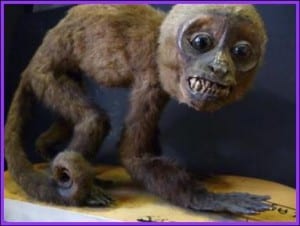Specimen of the Week: Week Forty-Four
By Emma-Louise Nicholls, on 13 August 2012
 Anyone who has seen our recent exhibition It Came from the Stores would now know that past curators have accessioned some pretty strange stuff in to a museum whose banner quite clearly reads ‘zoology’. Maybe with this thought in mind, I was asked recently why we have hominid material in a zoology museum. The definition of zoology is ‘the scientific study of the behaviour, structure, physiology, classification, and distribution of animals’ and animal is described as ‘a living organism which feeds on organic matter, typically having specialized sense organs and nervous system and able to respond rapidly to stimuli’. The un-ticked box for ‘responds rapidly to stimuli’ on my medical would clearly indicate that I am therefore not an animal. However, most? other humans are and so yes, hominids do belong in a museum of zoology. One such specimen in the collection particularly struck me this week, metaphorically speaking, as it lacks enough limb bones to lash out, and I discovered that behind those empty eye sockets is a really interesting history. This week’s specimen of the week is…
Anyone who has seen our recent exhibition It Came from the Stores would now know that past curators have accessioned some pretty strange stuff in to a museum whose banner quite clearly reads ‘zoology’. Maybe with this thought in mind, I was asked recently why we have hominid material in a zoology museum. The definition of zoology is ‘the scientific study of the behaviour, structure, physiology, classification, and distribution of animals’ and animal is described as ‘a living organism which feeds on organic matter, typically having specialized sense organs and nervous system and able to respond rapidly to stimuli’. The un-ticked box for ‘responds rapidly to stimuli’ on my medical would clearly indicate that I am therefore not an animal. However, most? other humans are and so yes, hominids do belong in a museum of zoology. One such specimen in the collection particularly struck me this week, metaphorically speaking, as it lacks enough limb bones to lash out, and I discovered that behind those empty eye sockets is a really interesting history. This week’s specimen of the week is…
**!!!The Homo erectus skull model!!!**
1) Homo erectus was first discovered in 1891. Which I think is really interesting as I was born in 1981. I didn’t say you’d find it interesting. It lived from 1.89 million years ago to as recently as 143,000 years ago, making it one of the more recent hominids in our evolutionary history. To the layman that translates as ‘more human shaped than monkey shaped.
2) After doing what you do as an early hominid in Africa for a while, H. erectus decided to up camp and leave. After a mammoth journey, it settled in Asia. Specimens have been found in Indonesia, China and the Republic of Georgia. It is widely accepted that Homo erectus was one of the first hominid species to have left Africa, which means I blame it entirely for me now living in a cold, rainy country.
3) In primates, having longer arms than legs is normally akin to being quadrupedal and tree-dwelling. Homo erectus was the first known hominid to sport the relatively long legs and short arms that we see in ourselves today. The changes in hominid proportions made them, and us, more suited to a terrestrial lifestyle and gave us the gift of walking upright, running long distances, and for 90% of us, bad posture and back-ache.
4) The earliest known handaxes, indicating the first major innovation in stone tool technology, have been attributed to H. erectus , making them the Brunels of the Pleistocene. Given the rapid progress of the industrial revolution, you may feel the development of a hand-axe was a poor effort bearing in mind Homo erectus lived for nine times as long as the current lineage of Homo sapiens. But given the comparative starting points, I think taking 140,000 years to invent a cleaver was pretty good going really.
5) Powering the bipedal body and larger brains of Homo erectus required more regular energy. The larger brain being my excuse for snacking a lot. Eating protein that can be digested rapidly, such as meat, allows for faster nutrient absorption and a shorter digestive tract. This would have provided Homo erectus with sufficient energy levels at regular enough intervals to power its brain and bipedal body.
One Response to “Specimen of the Week: Week Forty-Four”
- 1
 Close
Close




[…] The Grant Museum of Zoology and Comparative Anatomy in London might appear not to be a place to go to find out about human prehistory, but they do have a few animal skeletons on display that early humans would have come across when they first arrived in Europe, like giant deer skulls, as well as the skeletons of early humans (hominins) like Homo erectus. […]